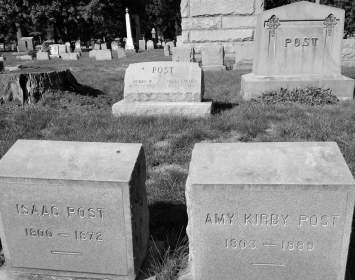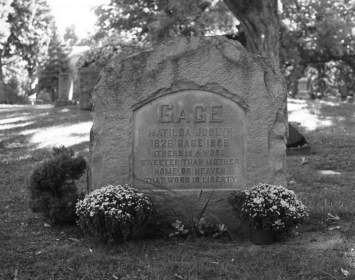Freethought Sites
Custom
290.0 Miles
This trail extends from Rochester on the west to Cazenovia on the east, terminating in Elmira. With the exception of the 1878 convention sites in Watkins Glen, unmarked sites are omitted. All other sites on this list include a gravestone, a historical marker, a historic structure, or a museum. The Watkins Glen sites are included because of the convention’s importance and also because the village’s infrastructure still preserves many elements of a classic late–nineteenth-century resort town then accessible mainly by steamboat or rail. The Ingersoll Museum has limited hours; call ahead or check online.
Visitors seeking a shorter curated experience might wish to visit the Rochester-area sites (both of which pertain to abolitionist/feminist Amy Post) and Dresden in one outing; Watkins Glen and Elmira in a second journey; and the Fayetteville and Cazenovia sites as a third. (The Matilda Jolsyn Gage Center in Fayetteville is especially rich and will reward a longer visit; call ahead for hours.)
"Freethought" (one word) is the label most often embraced by atheists, agnostics, and secularists of the nineteenth and early twentieth centuries. Free thinking (two words) could lead one to uncommon conclusions regarding any number of topics; freethinking (one word) came to mean the process by which one came to uncommon conclusions about religion. Freethinkers held that (either probably or certainly) God does not exist; that gods, scriptures, and religions are best understood as products of human action; that religion and government should be held separate; and that moral values should be sought in human experience, not in holy books.
During the nineteenth and early twentieth centuries, when west-central New York State played the role southern California does today, freethinkers tended to be involved in a wide variety of radical social reform efforts. Critics of religion were prominent in the abolition movement and were over-represented among so-called sex radicals, who championed everything from the abolition of marriage to birth control, then a most controversial notion. They were also prominent among proponents of woman’s rights and woman's suffrage (nineteenth-century practice was to use the singular, woman's; later practice was to use the plural, women's); indeed, two of the three leaders of the nineteenth century woman's suffrage movement, Elizabeth Cady Stanton and Matilda Joslyn Gage, were explicit freethinkers.
Of course, there was no shortage of freethinkers whose activism was principally concerned with challenging religious dogmas. Among them were orator Robert Green Ingersoll, born in Dresden; abolitionist and freethought organizer C. D. B. Mills; and famed satirist Mark Twain, who married into a prominent Elmira family, often visited the region, and is buried in Elmira. Also noteworthy was the New York Freethinkers Association, an organization of national significance that held two important conventions in Watkins, now Watkins Glen. The first of these conventions, in 1878, was the site of events that would lead indirectly to the standard for obscenity upheld by U.S. courts until 1959.



















